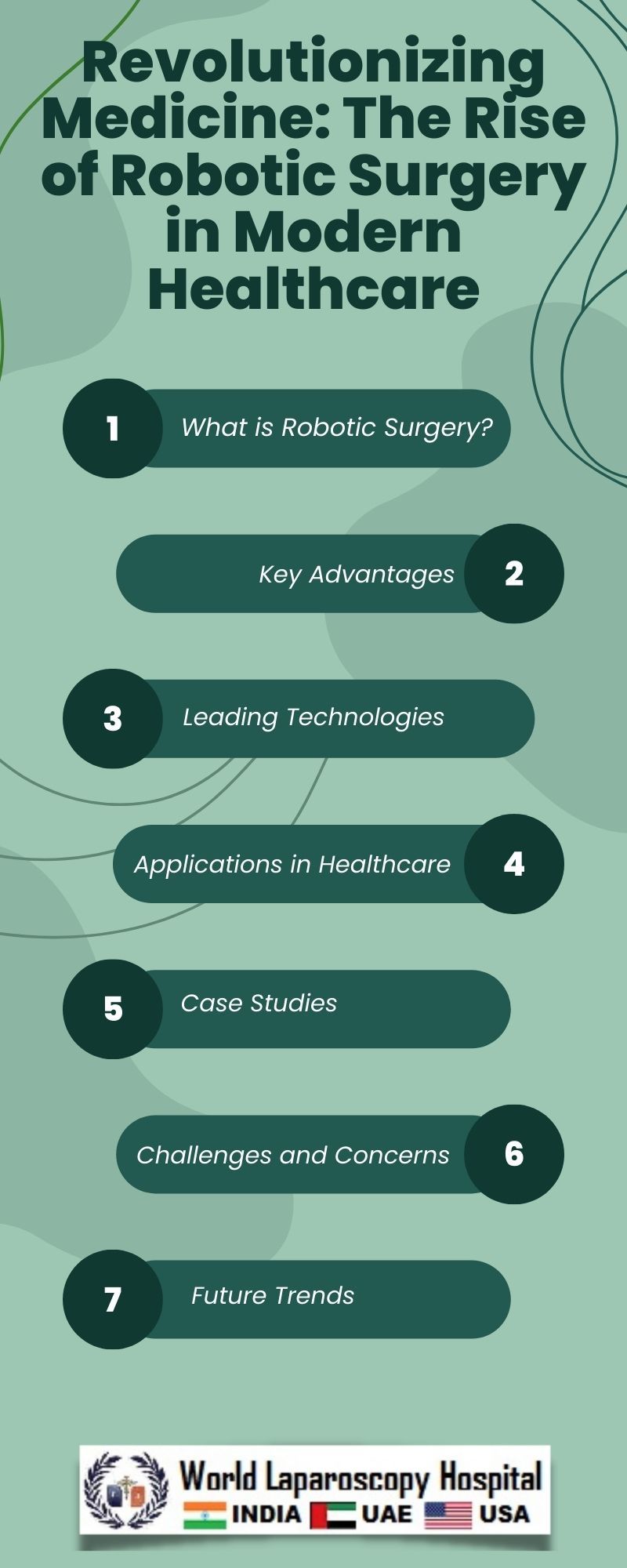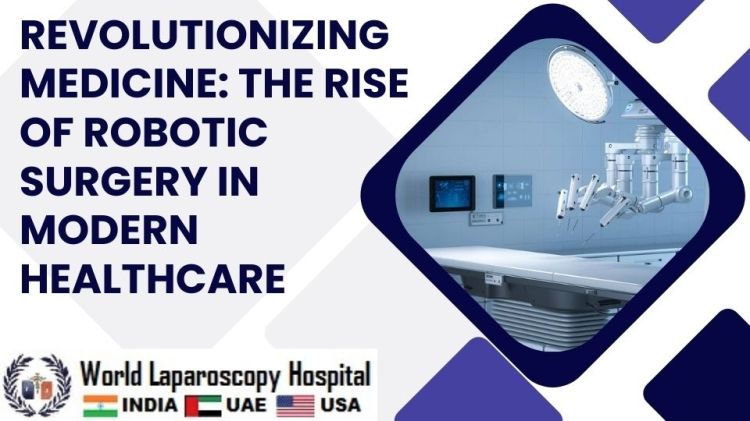Revolutionizing Medicine: The Rise of Robotic Surgery in Modern Healthcare
Introduction
In the ever-evolving landscape of modern healthcare, technological advancements continue to push the boundaries of medical capabilities. One such groundbreaking innovation that has garnered significant attention in recent years is robotic surgery. This revolutionary approach to surgical procedures holds the promise of transforming traditional medical practices, offering enhanced precision, improved patient outcomes, and a redefined standard for minimally invasive surgeries.

The Genesis of Robotic Surgery
The concept of robotic surgery traces its roots back to the mid-20th century when the first attempts were made to introduce automation into the surgical realm. Early experiments involved remote-controlled robotic arms, but it wasn't until the late 20th century that technological advancements paved the way for the development of the first true robotic surgical systems.
The Da Vinci Surgical System, introduced in the early 2000s, marked a significant milestone in the field of robotic surgery. Developed by Intuitive Surgical, this groundbreaking system provided surgeons with a three-dimensional, high-definition view of the surgical field, along with robotic arms controlled by a console. The intuitive interface allowed surgeons to manipulate the robotic instruments with unparalleled precision, setting the stage for a new era in surgical procedures.
Minimally Invasive Advantages
One of the key advantages of robotic surgery lies in its ability to enable minimally invasive procedures. Traditional open surgeries often involve large incisions, leading to increased pain, longer recovery times, and higher risks of complications. Robotic surgery addresses these challenges by utilizing smaller incisions through which robotic arms, equipped with specialized instruments and a camera, are inserted.
The minimally invasive nature of robotic surgery offers several benefits. Patients experience less postoperative pain, reduced blood loss, and faster recovery times. Smaller incisions also contribute to lower infection rates and minimized scarring, enhancing both the cosmetic and functional aspects of the surgical outcome.
Enhanced Precision and 3D Visualization
One of the hallmarks of robotic surgery is its unparalleled precision. The robotic arms used in these procedures can mimic the movements of a surgeon's hand but with a greater range of motion and stability. This precision is particularly crucial in delicate and intricate surgeries where accuracy is paramount.
Furthermore, robotic surgical systems provide surgeons with a three-dimensional, high-definition view of the surgical field. The improved visualization allows for a more detailed and accurate assessment of anatomical structures, enhancing the surgeon's ability to navigate complex procedures. This 3D visualization, coupled with magnification capabilities, contributes to increased surgical accuracy and improved patient outcomes.
Remote Surgery and Telemedicine
As technology continues to advance, the potential for remote surgery becomes increasingly feasible. Robotic surgery opens the door to the possibility of surgeons performing procedures on patients located miles, or even continents, away. This capability is especially significant in situations where specialized expertise is needed but not readily available locally.
The integration of robotic surgery with telemedicine platforms allows for real-time communication between surgeons and remote locations. This not only expands access to high-quality healthcare but also facilitates knowledge transfer and collaboration among medical professionals across geographical boundaries. While regulatory and ethical considerations remain, the prospect of remote robotic surgery presents an exciting frontier in global healthcare.
Challenges and Criticisms
Despite its transformative potential, robotic surgery is not without challenges and criticisms. The cost of acquiring and maintaining robotic systems can be prohibitive for some healthcare institutions, limiting widespread adoption. Additionally, there are concerns about the steep learning curve for surgeons transitioning to robotic procedures.
Critics argue that the benefits of robotic surgery, especially in terms of improved outcomes, are not universally demonstrated across all types of procedures. Some studies suggest that for certain surgeries, the advantages of robotic systems may not outweigh the increased costs and longer operating times.
Ethical considerations surrounding remote surgery and the potential for automation in decision-making also raise questions about patient safety and the role of human expertise in the surgical process. Striking a balance between technological innovation and ethical standards is an ongoing challenge for the medical community.
The Future of Robotic Surgery
As technology continues to advance and research in the field expands, the future of robotic surgery holds immense promise. New generations of robotic systems are likely to address current limitations, making the technology more accessible, cost-effective, and user-friendly.
Artificial intelligence (AI) integration is another avenue of exploration. AI algorithms could assist surgeons in real-time decision-making, analyze vast amounts of patient data, and contribute to personalized treatment plans. The synergy between robotics and AI may redefine the capabilities of surgical interventions, leading to even more precise and tailored approaches to patient care.
In the realm of education, virtual reality (VR) and augmented reality (AR) technologies could play a pivotal role in training the next generation of robotic surgeons. Immersive simulations and interactive experiences could enhance the learning process, allowing surgeons to hone their skills in a risk-free environment.
Conclusion
Robotic surgery stands at the forefront of a medical revolution, reshaping the landscape of modern healthcare. Its ability to offer minimally invasive procedures, enhance precision, and potentially enable remote surgery positions it as a transformative force in surgical practices.
While challenges and criticisms persist, ongoing research and technological advancements continue to address these issues. The future of robotic surgery holds the promise of improved patient outcomes, expanded access to healthcare, and a redefined standard for surgical excellence.
As the journey of robotic surgery unfolds, it is crucial for the medical community to navigate the ethical, economic, and educational considerations that accompany this transformative technology. In doing so, healthcare professionals can harness the full potential of robotic surgery to usher in a new era of innovation and patient-centered care.






